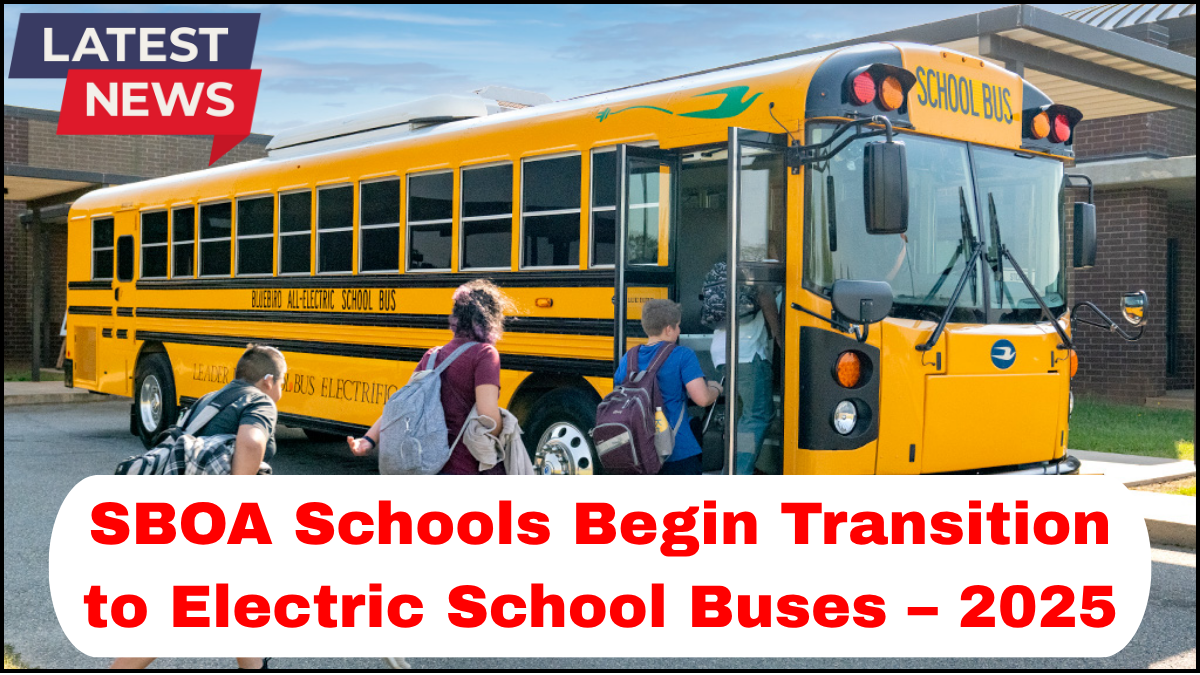In a significant move towards sustainable education infrastructure, SBOA Schools have officially initiated their school transportation EV switch in 2025. The transition to electric buses marks a bold step toward reducing the carbon footprint associated with daily student commutes while embracing cutting-edge transportation technology.

Why SBOA Schools Are Embracing Electric Mobility
With global conversations around climate change gaining urgency, the role of educational institutions in promoting environmental stewardship has become more prominent. SBOA Schools, known for progressive academic values, are now extending their vision beyond classrooms by converting their diesel-powered bus fleets into electric vehicles.
This initiative aligns with both national and global environmental goals, including India’s commitment to achieve net-zero emissions by 2070. Transitioning to electric buses not only reflects SBOA’s dedication to sustainability but also presents a practical solution to rising fuel costs, air pollution, and maintenance inefficiencies.
The Timeline and Scope of the Transition
The first phase of the EV rollout in 2025 includes the introduction of 50 electric school buses across select SBOA campuses in Chennai, Coimbatore, and Madurai. The plan is to fully transition the fleet—currently consisting of over 300 buses—within the next five years.
To support this shift, SBOA Schools have partnered with leading EV manufacturers and charging infrastructure providers. Charging stations are being installed within school premises to ensure seamless operation and minimal disruption to school schedules.
Environmental and Health Benefits for Students
Traditional diesel buses contribute significantly to urban air pollution. Switching to electric alternatives dramatically cuts down tailpipe emissions, which directly improves air quality around school zones. Students are among the most vulnerable to air pollution, with studies linking poor air quality to respiratory issues and cognitive impacts.
With this EV switch, SBOA Schools are prioritizing not just environmental goals, but the health and well-being of their students. Noise pollution, often overlooked, is also reduced considerably with the quieter operation of electric motors.
Economic and Operational Advantages
While the initial investment in EV infrastructure is substantial, the long-term economic benefits are clear. Electric buses have fewer moving parts compared to internal combustion engine (ICE) vehicles, which translates to lower maintenance costs. Additionally, electricity is more cost-stable than diesel, allowing for more predictable transportation budgeting.
By moving forward with this school transportation EV switch, SBOA Schools also position themselves to benefit from future government incentives and subsidies for green transportation initiatives. These may include tax breaks, grants for charging infrastructure, and reduced registration fees.
Technology Integration and Safety Features
The new electric bus fleet isn’t just environmentally friendly—it’s also technologically advanced. Equipped with GPS tracking, live camera feeds, and real-time route monitoring, these buses enhance student safety and improve operational efficiency. Parents will receive live updates on bus arrival times and route deviations, offering peace of mind and better communication.
Many of these buses are also fitted with regenerative braking systems, seat belt monitors, and automatic emergency response systems, making them not only cleaner but safer than their diesel counterparts.
Setting an Example for Other Institutions
SBOA’s proactive stance is likely to serve as a model for other educational institutions in India. As cities across the country begin exploring green urban transport strategies, the school sector remains a critical yet under-addressed piece of the puzzle.
By acting now, SBOA Schools are not only ensuring a sustainable future for their students but also demonstrating leadership in an area ripe for transformation.
FAQs
Q: Why is SBOA switching to electric school buses in 2025?
A: SBOA Schools are making the switch as part of a broader commitment to sustainability, reducing emissions, lowering long-term costs, and improving student health and safety.
Q: How many electric buses are being introduced in the first phase?
A: The initial phase includes 50 electric buses, with plans to fully convert the fleet over five years.
Q: Are there charging facilities at the schools?
A: Yes, charging stations are being installed at each participating school to support the new electric fleet.
Q: What are the safety features in these electric buses?
A: Features include GPS tracking, live camera feeds, regenerative braking, seat belt alerts, and emergency response systems.
Q: How will this transition impact school operations?
A: The shift to electric vehicles is designed to be smooth, with operational schedules maintained through overnight charging and route planning.
click here to learn more